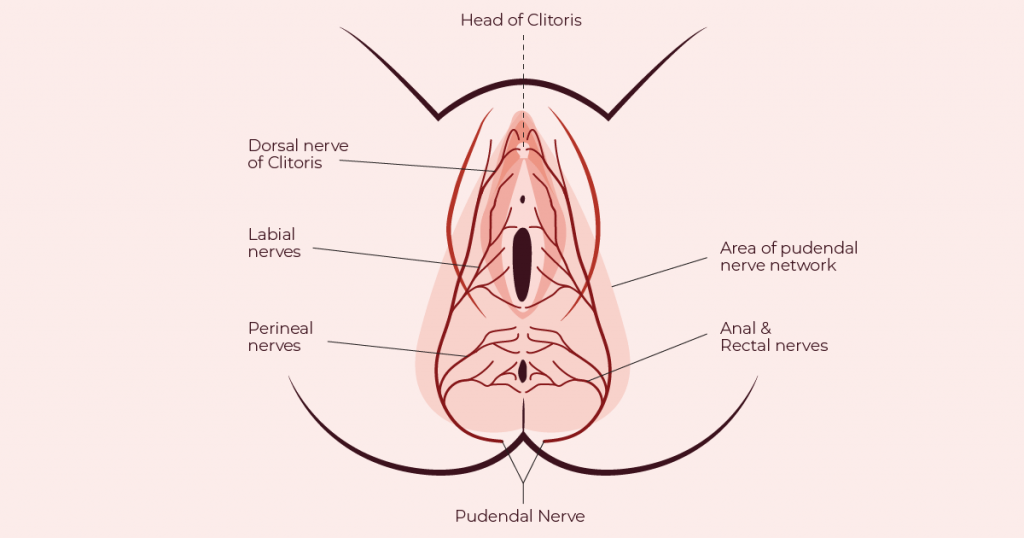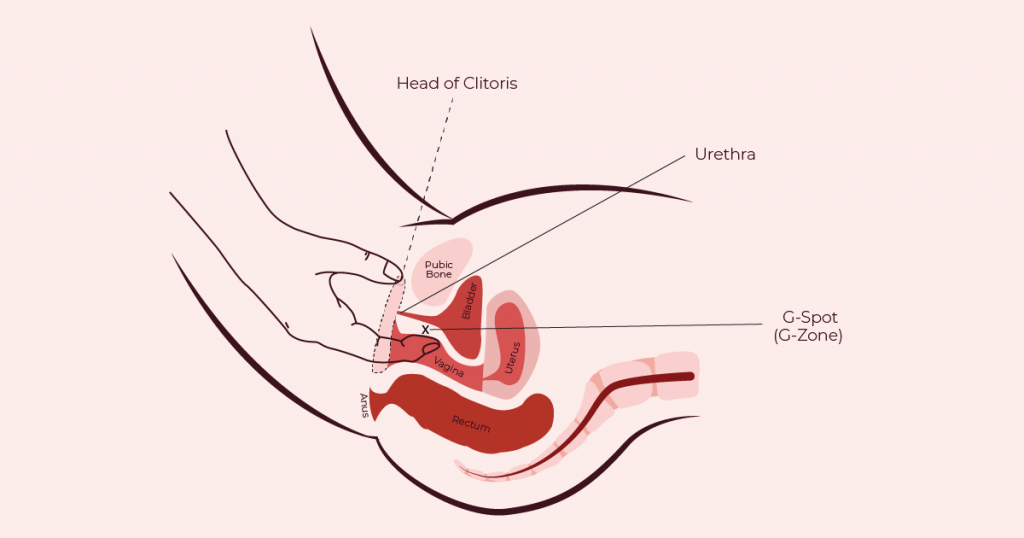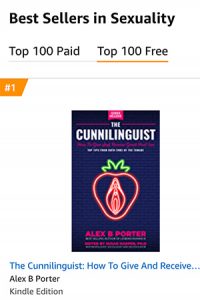This is the companion document for the audiobook version of The Cunnilinguist: How To Give And Receive Great Oral Sex – Top Tips From Both Ends Of The Tongue. You can also download the companion doc in PDF format here.
A short LGBTQ+ glossary
Disclaimer: Definitions are simplified. Full descriptions could span multiple pages or be the subject of full academic papers. Hey, some things are complex.
- Androgynous: Describes people who display attributes that could be seen as having both female and male characteristics, or neither.
- Binary: When something is described as binary, there are only two options available. For example, “yes or no” or “true or false.” There is no method of describing anything in between or anything more complex. In sexuality, “Binary” can refer to biological sex (female or male) or gender (woman or man).
- Biological Gender: Same as “Biological Sex.”
- Biological Sex (Sex): This is the basis for the assignment of gender birth and is based on genitalia. In most Western societies, sex and gender are seen as inextricable and thus you may also hear the term “Biological Gender” used.
- Bisexual: Derived from binary gender, the term was used to describe people who are attracted to “both” female and male genders. In reality, the term is now used to describe people who are attracted to more than one gender. Exactly how much they are attracted to each gender can vary hugely.
- Cisgender (cis): Describes people who identify with the same gender that they were assigned at birth. Basically, the majority of the population are cisgender. The term “cis” also comes from Latin and has a meaning “on the same side of.” “Cis” and “Trans” are at opposite ends of the cis-trans continuum.
- Feminine: Describes people who display attributes that are culturally associated with being a woman/female.
- Gay: Describes people who are attracted to people whose sex and gender are like their own. A gay person could be trans, or cis, or anywhere in between. Usually this is taken to mean they are only attracted to people of the “same” sex. Most often you will see it used when referring to “gay men.” I personally prefer the term gay over lesbian and tend to describe myself as gay when the situation arises, e.g. when the locum doctor can’t understand why I don’t need to take a pregnancy test even though I’m in a long-term relationship.
- Gender Identity (Gender): The gender a person feels they are, regardless of what their biological sex is. Gender identity runs from female to non-binary to male. Gender identity can be expressed in various manners. For example, physical appearance can range from feminine to androgynous to masculine. For most people, their sense of gender identity aligns with their biological sex.
- Gender Non-Conforming (GNC): Same as Non-Binary.
- Gender-fluid: Similar to non-binary, but implies that gender identity is less fixed and can vary, e.g. from month to month or day to day.
- Gender-neutral Terms: Terms that can be used irrespective of gender. In the context of this book, gender-neutral terms are primarily about adjusting language to improve inclusivity. This is done by using words such as partner, they, and theirs as opposed to using he/she
- Gender/Sex: These terms are linked and often interchanged. However, although they are related, they are not the same thing. “Sex” is biological: female, male or intersex. “Gender” is a social construct based around what society deems to be feminine or masculine. None of us were born woman or man, but gender norms influence us from an early age: Pink or blue? Dolls or cars? Sex and gender are different things, yet they have become inextricable within Western culture and are almost always based on the biological sex assigned at birth. Because of this, “Gender Identity” is now a term that is frequently used.
- Heterosexual: Describes people who are attracted only to people whose gender and sex are different than their own. Usually this is taken to mean they are only attracted to people of the “opposite” sex. “Hetero” means “other” or “different” in Latin.
- Homoflexible: Describes someone who is almost exclusively homosexual, but occasionally has attraction to or sexual interaction with someone of a gender different than their own. Similarly, Heteroflexible also exists. They’re both a form of bisexuality that says “I’m much closer to the homosexual or heterosexual end of the spectrum.”
- Homopolyamorus: I made that one up but I’m sure you can figure out where I was going with it!
- Homosexual: Describes people who are attracted to the same sex. “Homo” means “one or the same” in Latin.
- Intersex: Describes people who have genital development that is neither 100 percent female nor 100 percent male.
- Lesbian: Same as “Gay,” except only used to describe women who are exclusively attracted to other women. A lesbian could be trans, cis, or anywhere in between.
- LGBT+: An acronym that stands for Lesbian, Gay, Bisexual, Transgender, Questioning/Queer, and others. There are lots of variations on this that include more or less letters (hence the “+” often placed at the end). Basically, it means anyone who is outside the cultural norms of gender and sexuality, specifically outside of heterosexuality or cisgender-ness.
- Masculine: Describes people who display attributes that are culturally associated with being a man/male.
- Non-Binary: Describes people whose gender identity does not fit the binary cultural norms of female or male.
- Pansexual: Describes people who are attracted to another person, regardless of sex or gender. Neither gender nor genitalia play any part in who they are attracted to.
- Polyamorous: Describes people who have intimate loving and sexual relationships with multiple people at the same time. These people can all be in a closed relationship together, or in a poly relationship that is much more open and complex.
- Queer: Similar to LGBT+ (which is often written LGBTQ+), queer is an umbrella term used to describe a person who is outside the cultural norms of gender and sexuality.
- Sex: See “Gender/Sex” and “Biological Sex.”
- Sexual Orientation: Describes who people are romantically and sexually attracted to. Whilst it forms part of our identity, it is very different and separate from gender.
- Sexuality: Focuses on sexual behavior and expression. A complete description of your sexuality would include sexual orientation and elements of gender; however, “Sexuality” is much bigger. The Oxford Dictionary describes it as capacity for sexual feelings. Sexuality is what you like or dislike and how you feel and express yourself. For example, you may love spanking and have a high sex drive; you may be highly emotive or spiritual; or you may be promiscuous. All of these form part of your sexuality, but they do not form part of your gender; nor are they anything to do with your sexual orientation.
- Straight: Same as “Heterosexual.”
- Transgender (trans): Describes people who identify as a different gender than the gender which they were assigned at birth. For example, a trans man is someone who was assigned female at birth but now identifies as a male. They may or may not have had surgery or hormone therapy to physically transition. For the geeks out there, “trans” comes from Latin and has the meaning “on the other side of.”
Anatomy
Diagrams from the anatomy chapter.
Effort has been made to ensure the images created for this book are informative and beneficial to readers, however please note that they are are artistic representations, illustrated with aesthetics in mind. They should not be taken as scientific fact or to be medically accurate; the vulvas you encounter will probably not look like a strawberry!
Figure 1: Vulva

Figure 2: Spine and Pudendal Nerve

Figure 3: The Clitoral Organ

Figure 4: Pudendal Nerve, Female (Side)

Figure 5: Pudendal Nerve, Female

Figure 6: Pudendal Nerve, Male (Side)

Figure 7: G-Spot, Female

Figure 8: Clitoral Piercings

Ten oral sex tongue and jaw exercises
When performing these movements, try to avoid tongue contact with teeth at all times and remember to be mindful of your breathing technique. Without further ado, here we go:
- Try to touch your chin with your tongue.
- Try to touch your nose with your tongue.
- Quickly, move your tongue up and down so it touches the roof and floor of your mouth. Keep your mouth open and your tongue inside, behind your teeth.
- With your mouth open slightly and tongue peeking out, move your tongue left and right, so it hits the corners of your mouth. Try not to touch your lips or teeth.
- With your tongue inside your mouth, move it left so it touches your cheek. Use your hand on the outside of your cheek to provide resistance. Increase the pressure of your tongue and hold for a few seconds. Do the same on the right side.
- Stick your tongue straight out, then move it in a circle around your lips. Keep your tongue straight and hard. This time, try to keep contact with your lips, but avoid teeth. Change direction and repeat.
- Make this series of exaggerated moves with your mouth: (1) Say ahhhh! with a wide, open mouth. Just like at the dentist. (2) Say ooooh! Similar to a big puckered pout. (3) Say weeeeee! With a big wide grin, just like a little kid running in circles.
- With your tongue touching the roof of your mouth, open and close your jaw as wide as you can. Keep tongue contact with the roof of your mouth.
- Stick your tongue out and alternate between making it “flat and wide” and then “long and pointy.” Consider doing this in front of a mirror until you get the technique right.
- Simply move your tongue and jaw more throughout the day. Become aware of them and how they move. If you’ve got reminders to walk or whatnot, also use these to remind you to give that tongue a shake.
Need to improve your stamina? Simply do more reps. Your speed? Go faster. Control? Go slower. And when you’re ready, go find a partner who’s willing to let you practice on them.
References & Footnotes
A list of footnotes from within the written book. These are listed in chronological order and organized according to audiobook chapter.
Research and the heterosexual orgasm gap
- Frederick, David A., et al. “Differences in orgasm frequency among gay, lesbian, bisexual, and heterosexual men and women in a US national sample.” Archives of sexual behavior 1 (2018): 273-288.
- Note that whilst thisbook attempts to be neutral as regards gender and sexual orientation current research studies are limited, especially in terms of gender. When referring to research we will use language as per the
- Lloyd, Elisabeth Anne. The case of the female orgasm: Bias in the science of evolution. Harvard University Press, 2009.
- Kinsey, Alfred C., et al. Sexual behavior in the human female. Indiana University Press, 1998.
How to use this book and what to expect
- The term “craic” is pronounced “crack” and usage of it is widespread throughout Ireland. It can be used to mean fun, enjoyment or banter (“It was great craic!”), or it can be used to inquire about someone’s form or what they’ve been up to (“How’s the craic?”).
- James, S. E., Herman, J. L., Rankin, S., Keisling, M., Mottet, L., & Anafi, M. (2016). The Report of the 2015 U.S. Transgender Survey. Washington, DC: National Center for Transgender Equality.
- Toomey, Russell B., Amy K. Syvertsen, and Maura Shramko. “Transgender adolescent suicide behavior.” Pediatrics 142.4 (2018): e20174218. | Haas, Ann P., Philip L. Rodgers, and Jody L. Herman. “Suicide attempts among transgender and gender non-conforming adults.” work 50 (2014): 59.
- Kessler, Ronald C., Guilherme Borges, and Ellen E. Walters. “Prevalence of and risk factors for lifetime suicide attempts in the National Comorbidity Survey.” Archives of general psychiatry 56.7 (1999): 617-626.
- Ito, Tiffany A., and Geoffrey R. Urland. “Race and gender on the brain: electrocortical measures of attention to the race and gender of multiply categorizable individuals.” Journal of personality and social psychology4 (2003): 616.
- A typical male has XY chromosomes, and a typical female has XX. But owing to genetic variation or chance events in development, some people do not fit neatly into either category. Find out more in the article “Sex redefined” by Claire Ainsworth on Nature.com.
Chapter 1: (Muff) Diving In
- 50% Of Men Don’t Know Where The Vagina Is, According To UK Study, Bruce Y. Lee, Forbes 2017,
- Di Marino, Vincent, and Hubert Lepidi. Anatomic study of the clitoris and the bulbo-clitoral organ. Vol. 91. Switzerland: Springer International Publishing, 2014.
- Angier, Natalie. Woman: An intimate geography. Anchor, 2000.
- [Refers to first diagram, Figure 1] Effort has been made to ensure the images created for this book are informative and beneficial to readers, however please note that they are are artistic representations, illustrated with aesthetics in mind. They should not be taken as scientific fact or to be medically accurate; the vulvas you encounter will probably not look like a strawberry.
- Pacik, Peter T. and Simon Geletta. “Vaginismus Treatment: Clinical Trials Follow Up 241 Patients.” Sexual medicine(2017).
Chapter 2: Going Deeper
- Muise, Amy, Elaine Giang, and Emily A. Impett. “Post sex affectionate exchanges promote sexual and relationship satisfaction.” Archives of Sexual Behavior 43.7 (2014): 1391-1402.
Chapter 3: Down to Business
- [Refers to “lesbians” in the sentence “Popular opinion suggests that the reason lesbians…”] Or more accurately, people with vulvas who have sex with other people with vulvas. The research is pretty binary and cis-centric. And to be fair, anatomy can also vary.
- Frederick, David A., et al. “Differences in orgasm frequency among gay, lesbian, bisexual, and heterosexual men and women in a US national sample.” Archives of sexual behavior1 (2018): 273-288. Research found that gay men reported orgasming “usually or always” 89 percent of the time, compared to 95 percent in heterosexual men.
- Faking It: Exploring Why Women and Men Fake Orgasms, Zava (previously Dr. Ed), 2017 https://www.zavamed.com/uk/faking-it.html
- Cosmo’s Female Orgasm Survey, 2015
- Brewer G., Hendrie C. A. Evidence to suggest that copulatory vocalizations in women are not a reflexive consequence of orgasm. Archives of Sexual Behavior. 2011; 40(3): 559–564. https://doi.org/10.1007/s10508-010-9632-1
- Breanne Fahs & Sara I. McClelland (2016) When Sex and Power Collide: An Argument for Critical Sexuality Studies, The Journal of Sex Research, 53:4-5, 392-416, DOI: 10.1080/00224499.2016.1152454
Chapter 5: Beyond Lip Service
- Herbenick, Debby, et al. “Women’s Experiences With Genital Touching, Sexual Pleasure, and Orgasm: Results From a US Probability Sample of Women Ages 18 to 94.” Journal of sex & marital therapy 44.2 (2018): 201-212.
- Herbenick, Debra, et al. “Prevalence and characteristics of vibrator use by women in the United States: Results from a nationally representative study.” The journal of sexual medicine 6.7 (2009): 1857-1866.
- Rabbit Vibrator, https://en.wikipedia.org/wiki/Rabbit_vibrator
That’s all, folks!
I hope you had as much fun reading this book as I had writing it, and that you find something useful no matter your skill level, no matter your gender, and no matter what end of the tongue you find yourself at.
Now away you go and try a few tricks and tips out, if you have not already. Oh, and you can pick up your certificate of completion at www.alexbporter.com/cert 😉 😉 😉
Acknowledgments and Thankyou
A massive thank you to all those who contributed to the research element of this book, from the writers, academics and researchers, to the people who spoke to me, email contributors, personal friends, family and most of all, my amazing partner. Those who were happy for a semi-anonymous credit include Barbs and Ella, Katie, Michelle, Christine, Mark and Kazza, Jo, Michael, Aoife, Eve and Molly, Dee, Rowan, Danni, Z, Carol, Zayne, Twigs, Charlie, Emily, Sophie and Keggs (the Facebooker who kicked it all off!). Also, a huge thank you to the production team, Haley Torboli for her detailed eye, a friend who shall remain anonymous, the graphic designers and illustrators (find out more on my blog) and of course, Susan Harper, who really turned this book into something special and educated me significantly along the way!
Bibliography/ References
- 50% Of Men Don’t Know Where The Vagina Is, According To UK Study, Bruce Y. Lee, Forbes 2017, https://www.forbes.com/sites/brucelee/2017/09/03/50-of-men-dont-know-where-the-vagina-is-according-to-uk-study/#9e03e2e17747
- ‘Golden trio’ of moves boosts chances of female orgasm, say researchers, Nicola Davis and Mona Chalabi, The Guardian, 2017
- A Renewed Call to Action to End Rape and Sexual Assault, Valerie Jarrett, Obama White House, 2014, https://obamawhitehouse.archives.gov/blog/2014/01/22/renewed-call-action-end-rape-and-sexual-assault
- com staff (2014). “Medical gallery of Blausen Medical 2014”. WikiJournal of Medicine 1 (2). DOI:10.15347/wjm/2014.010. ISSN 2002-4436., https://commons.wikimedia.org/wiki/File:Blausen_0400_FemaleReproSystem_02.png
- Botox Injection for Treatment of Vaginismus, https://clinicaltrials.gov/ct2/show/NCT01352546
- Breanne Fahs & Sara I. McClelland (2016) When Sex and Power Collide: An Argument for Critical Sexuality Studies, The Journal of Sex Research, 53:4-5, 392-416, DOI: 10.1080/00224499.2016.1152454
- Brewer G., Hendrie C. A. Evidence to suggest that copulatory vocalizations in women are not a reflexive consequence of orgasm. Archives of Sexual Behavior. 2011; 40(3): 559–564. https://doi.org/10.1007/s10508-010-9632-1
- Clitoris Anatomy, https://commons.wikimedia.org/wiki/File:Clitoris_Anatomy.svg
- Cosmo’s Female Orgasm Survey, 2015 https://www.cosmopolitan.com/uk/love-sex/sex/news/a34410/female-orgasm-survey/
- Di Marino, V. & Lepidi, H. (2014). Anatomic Study of the Clitoris and the Bulbo-Clitoral Organ. Heidelberg, Germany: Springer.
- Differences in Orgasm Frequency Among Gay, Lesbian, Bisexual, and Heterosexual Men and Women in a U.S. National Sample. Frederick, D.A., John, H.K.S., Garcia, J.R. et al. Arch Sex Behav (2018) 47: 273. https://doi.org/10.1007/s10508-017-0939-z
- Johannes Sobotta, Sobo 1911 725, https://commons.wikimedia.org/wiki/File:Sobo_1911_725.png
- Faking It: Exploring Why Women and Men Fake Orgasms, Zava (previously Dr. Ed), 2017 https://www.zavamed.com/uk/faking-it.html
- Häggström, Mikael (2014). “Medical gallery of Mikael Häggström 2014”. WikiJournal of Medicine 1 (2). DOI:10.15347/wjm/2014.008. ISSN 2002-4436.
- Juliet Richters, Richard de Visser, Chris Rissel & Anthony Smith (2006) Sexual practices at last heterosexual encounter and occurrence of orgasm in a national survey, The Journal of Sex Research, 43:3, 217-226, DOI: 10.1080/00224490609552320
- Kerner, Ian – She Comes First: The Thinking Man’s Guide To Pleasuring A Woman, 2004
- Kinsey, A. C., & Institute for Sex Research. (2010). Sexual behavior in the human female
- Lloyd, E. A. (2005). The case of the female orgasm: Bias in the science of evolution. Cambridge, MA, US: Harvard University Press.
- Nagoski, Emily Come As You Are: The Surprising New Science that Will Transform Your Sex Life, 2015
- OpenStax College, 2604 Nerves Innervating the Urinary SystemN, https://commons.wikimedia.org/wiki/File:2604_Nerves_Innervating_the_Urinary_SystemN.jpg
- Post Sex Affectionate Exchanges Promote Sexual and Relationship Satisfaction, Muise, A., Giang, E. & Impett, E.A. Arch Sex Behav (2014) 43: 1391. https://doi.org/10.1007/s10508-014-0305-3
- Prevalence and Characteristics of Vibrator Use by Women in the United States: Results from a Nationally Representative Study, Herbenick, Debra et al., The Journal of Sexual Medicine, Volume 6 , Issue 7 , 1857 – 1866
- Puppo, Vincenzo. (2013). Anatomy and physiology of the clitoris, vestibular bulbs, and labia minora with a review of the female orgasm and the prevention of female sexual dysfunction. Clinical anatomy (New York, N.Y.). 26. 10.1002/ca.22177.
- Sexual Desire and Arousal Disorders in Women. Advances in psychosomatic medicine, Laan, Ellen & Phd, Stephanie. (2011). 31. 16-34. 10.1159/000328806.
- Sexual Practices at last heterosexual encounter and occurrence of orgasm in a national study
- The Emirr, TE-Nervous system diagram unlabeled, annotated, https://en.wikipedia.org/wiki/Template:Annotated_image/Nervous_System
- The enduring enigma of female desire, Rachel Newer, BBC, 2016 http://www.bbc.com/future/story/20160630-the-enduring-enigma-of-female-desire
- The most embarrassing pain of all? Pudendal nerve pain – a short guide, Dr Z Ward, Life In Alignment Chiropractic, 2015, https://liachiro.com/the-most-embarrassing-pain-of-all-pudendal-nerve-pain-a-short-guide/
- The nerves and vasculature of the clitoris are absent from OB/GYN literature, Jessica Pin (2018) https://medium.com/@jessica86/ob-gyns-dont-learn-the-nerves-and-vasculature-of-the-clitoris-ccc56e55ac90
- The Truth About ‘Lesbian Bed Death’: It’s Complicated, Margaret Nichols PhD, GoodTherapy, (2013) https://www.goodtherapy.org/blog/truth-about-lesbian-bed-death-its-complicated-1210134
- Women Reveal The Specific Movements That Make Them Orgasm, Alanna Vagianos, HuffPost US 2017, https://www.huffingtonpost.co.uk/entry/straight-women-reveal-the-specific-movements-that-make-them-orgasm_us_59a43c7ee4b05710aa5dd83e
- Women’s Experiences With Genital Touching, Sexual Pleasure, and Orgasm: Results From a U.S. Probability Sample of Women Ages 18 to 94, Journal of Sex & Marital Therapy, Debby Herbenick, Tsung-Chieh (Jane) Fu, Jennifer Arter, Stephanie A. Sanders & Brian Dodge (2018), Journal of Sex & Marital Therapy, 44:2, 201-212, DOI: 10.1080/0092623X.2017.1346530
- Women’s Perceptions about Lubricant Use and Vaginal Wetness During Sexual Activities, Jozkowski, Kristen N. et al. The Journal of Sexual Medicine, Volume 10 , Issue 2 , 484 – 492
Thank you… and a favor…
I hope you enjoyed this book and have learned something that will benefit your sex life and that of your partner(s).
If you have a moment to spare….I would really appreciate if you could leave a short review or rating at the store you purchased it — THANK YOU!
#TheCunnilinguist
Enjoy social media and sharing fun stuff? Head over to www.alexbporter.com/cunni-fun where you’ll find a selection of #TheCunnilinguist images.






